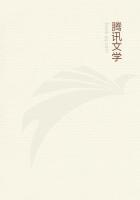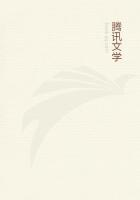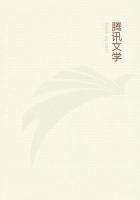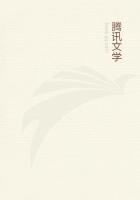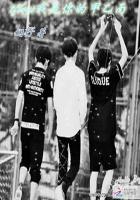The animal then is subject, on the one hand, to the promptings of gravity, and this to an equal degree for all, whatever the storey inhabited. Gravity is the common guide of the whole series from base to top. But those in the lower boxes have a second guide, when the bottom end is open. This is the stimulus of the adjacent air, a more powerful stimulus than that of gravity. The access of the air from without is very slight, because of the partitions; while it can be felt in the nethermost cells, it must decrease rapidly as the storeys ascend. Wherefore the bottom insects, very few in number, obeying the preponderant influence, that of the atmosphere, make for the lower outlet and reverse, if necessary, their original position; those above, on the contrary, who form the great majority, being guided only by gravity when the upper end is closed, make for that upper end. It goes without saying that, if the upper end be open at the same time as the other, the occupants of the top storeys will have a double incentive to take the ascending path, though this will not prevent the dwellers on the lower floors from obeying, by preference, the call of the adjacent air and adopting the downward road.
I have one means left whereby to judge of the value of my explanation, namely, to experiment with tubes open at both ends and lying horizontally. The horizontal position has a twofold advantage.
In the first place, it removes the insect from the influence of gravity, inasmuch as it leaves it indifferent to the direction to be taken, the right or the left. In the second place, it does away with the descent of the rubbish which, falling under the worker's feet when the boring is done from below, sooner or later discourages her and makes her abandon her enterprise.
There are a few precautions to be observed for the successful conduct of the experiment; I recommend them to any one who might care to make the attempt. It is even advisable to remember them in the case of the tests which I have already described. The males, those puny creatures, not built for work, are sorry labourers when confronted with my stout disks. Most of them perish miserably in their glass cells, without succeeding in piercing their partitions right through.
Moreover, instinct has been less generous to them than to the females. Their corpses, interspersed here and there in the series of the cells, are disturbing causes, which it is wise to eliminate. Itherefore choose the larger, more powerful-looking cocoons. These, except for an occasional unavoidable error, belong to females. I pack them in tubes, sometimes varying their position in every way, sometimes giving them all a like arrangement. It does not matter whether the whole series comes from one and the same bramble-stump or from several: we are free to choose where we please; the result will not be altered.
The first time that I prepared one of these horizontal tubes open at both ends, I was greatly struck by what happened. The series consisted of ten cocoons. It was divided into two equal batches. The five on the left went out on the left, the five on the right went out on the right, reversing, when necessary, their original direction in the cell. It was very remarkable from the point of view of symmetry;moreover, it was a very unlikely arrangement among the total number of possible arrangements, as mathematics will show us.
Let us take n to represent the number of Osmiae. Each of them, once gravity ceases to interfere and leaves the insect indifferent to either end of the tube, is capable of two positions, according as she chooses the exit on the right or on the left. With each of the two positions of this first Osmia can be combined each of the two positions of the second, giving us, in all, 2 x 2 = (2 squared)arrangements. Each of these (2 squared) arrangements can be combined, in its turn, with each of the two positions of the third Osmia. We thus obtain 2 x 2 x 2 = (2 cubed) arrangements with three Osmiae; and so on, each additional insect multiplying the previous result by the factor 2. With n Osmiae, therefore, the total number of arrangements is (2 to the power n.)But note that these arrangements are symmetrical, two by two: a given arrangement towards the right corresponds with a similar arrangement towards the left; and this symmetry implies equality, for, in the problem in hand, it is a matter of indifference whether a fixed arrangement correspond with the right or left of the tube. The previous number, therefore, must be divided by 2. Thus, n Osmiae, according as each of them turns her head to the right or left in my horizontal tube, are able to adopt (2 to the power n - 1)arrangements. If n = 10, as in my first experiment, the number of arrangements becomes (2 to the power 9) = 512.
Consequently, out of 512 ways which my ten insects can adopt for their outgoing position, there resulted one of those in which the symmetry was most striking. And observe that this was not an effect obtained by repeated attempts, by haphazard experiments. Each Osmia in the left half had bored to the left, without touching the partition on the right; each Osmia in the right half had bored to the right, without touching the partition on the left. The shape of the orifices and the surface condition of the partition showed this, if proof were necessary. There had been a spontaneous decision, one half in favour of the left, one half in favour of the right.

